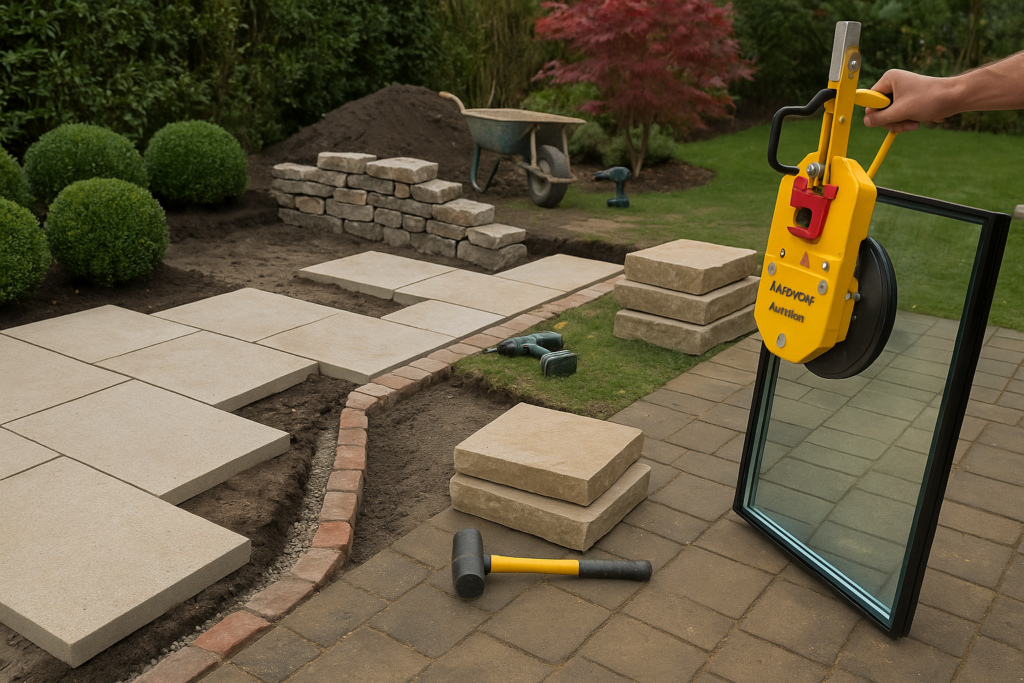When contractors define landscape, they take broad concepts of outdoor design and translate them into tangible, buildable projects. While architects and designers may conceptualize, contractors are responsible for implementing the vision—making sure the scope of work aligns with budget, materials, and long-term functionality. In professional landscaping, defining scope is not just about what needs to be built; it’s about sequencing, material choices, sustainability, and ensuring every element of design can thrive in its environment.
In this article, we’ll explore how contractors define landscape scope in their work, the role of core elements and principles, and the tools and innovations—from stone fabrication to energy-efficient glass—that shape today’s projects.
What Does It Mean to Define Landscape in Contracting?
To define landscape in contracting terms is to clearly set boundaries around project goals. Contractors establish:
- The physical scope: grading, irrigation, planting, hardscaping, and structural features.
- The material requirements: stone, glass, timber, soil, and fixtures.
- The technical considerations: drainage, lighting, irrigation systems, and energy efficiency.
- The execution plan: timelines, workforce, machinery, and safety protocols.
Defining landscape scope ensures that creative visions from designers or architects translate into real, functional spaces without overspending or overextending.
Core Elements Contractors Work With
Space: Translating Plans into Reality
Space is the first concern when contractors define landscape. They determine how to excavate, grade, and shape areas for lawns, gardens, pathways, and patios. This involves practical knowledge of zoning regulations, soil conditions, and accessibility requirements.
Line: Constructing Flow
Contractors establish lines physically—installing pathways, curbs, and fencing that create structure. Straight lines are often used for formal designs, while curves soften spaces. Contractors often coordinate with architects, such as those in Architects Define Landscape Integration in Urban Planning, to align lines with larger urban infrastructure.
Form: Building Structural Identity
Form comes alive through built features: pergolas, retaining walls, water features, and planting masses. Contractors ensure these are structurally sound and meet building codes. Sculptural forms—like wave-shaped hedges—require careful trimming schedules and long-term maintenance.
Texture: Enhancing Sensory Experience
Textures emerge from material choices. Smooth concrete contrasts with rough bark mulch, while polished glass surfaces reflect surrounding greenery. Contractors often rely on high-quality stone fabrication for pathways, steps, and retaining walls, creating both tactile richness and durability.
Colour: Delivering Visual Impact
Colour is applied through planting schemes and materials. Contractors coordinate plant palettes with seasonal changes, while hardscaping materials like brick, stone, and paint contribute lasting tones.
Principles of Landscape in Contracting
Contractors apply guiding principles practically:
- Balance: Ensuring the physical weight of trees, structures, and plantings feel stable.
- Proportion: Scaling features like patios and pergolas to human use.
- Rhythm: Installing repeated elements such as evenly spaced lighting or tree lines.
- Emphasis: Creating focal points with water features, sculptures, or specimen trees.
- Unity: Integrating all elements into a seamless, functional space.
These principles ensure landscapes remain cohesive even after years of wear.
Contractors and Sustainable Practices
Smart Resource Management
Contractors play a pivotal role in sustainability. They manage irrigation, minimize waste, and install eco-friendly systems. Many practices align with architectural insights from Experts Define Landscape Design Across Modern Practices, where eco-responsibility underpins design decisions.
Energy Efficiency in Hardscapes
Sustainable glass elements are also entering landscape construction. Contractors may install greenhouses, partitions, or glass balustrades using safe tools like the Glass Lifter. When paired with Insulating Glass Unit Benefits for Energy Savings, glass features add both beauty and energy-conscious performance.
Waste Reduction
Many contractors now follow practices borrowed from large-scale planning projects. Initiatives like Designers Define Landscape Elements in Creative Projects highlight how creative design and waste reduction go hand-in-hand, setting a standard for contractors working on smaller residential projects as well.
Tools and Materials Shaping Professional Landscaping
Stone Fabrication: Foundation of Durability
From retaining walls to walkways, stone fabrication gives contractors versatile options. Cut stone provides structural stability while adding natural beauty to both residential and commercial projects.
Glass in Landscaping: Precision and Safety
With outdoor glass features becoming more common, contractors rely on safe handling tools like the glass lifter. These tools allow for efficient installation of large glass panels, ensuring precision and safety on-site.
Insulating Glass: Long-Term Benefits
Urban and suburban projects often include enclosed spaces or greenhouse structures. By using Insulating Glass Unit Benefits for Energy Savings, contractors contribute to energy savings, reducing heating and cooling costs for clients.
The Contractor’s Perspective on Collaboration
Contractors rarely work in isolation. Their role bridges the gap between design concepts and physical realities. They coordinate with:
- Architects, who set the overall framework (see Architects Define Landscape Integration in Urban Planning).
- Designers, who refine creative elements (see Designers Define Landscape Elements in Creative Projects).
- Experts, who guide sustainability and innovation (see Experts Define Landscape Design Across Modern Practices).
Through collaboration, contractors ensure projects are executed efficiently, safely, and sustainably.
Questions Contractors Ask When Defining Scope
- How should space be graded for drainage and accessibility?
- What materials ensure durability and minimize maintenance?
- Which lines will guide pedestrian flow and traffic safely?
- How can the design’s form and function remain cost-effective?
- What sustainable practices reduce waste and energy consumption?
By addressing these questions, contractors ground abstract design principles in practical execution.
Conclusion: Contractors Define Landscape as Practical Art
When contractors define landscape, they transform creative visions into functioning, enduring spaces. They interpret plans, source materials, manage logistics, and ensure sustainability—all while respecting budgets and deadlines.
From the craftsmanship of stone fabrication to the precision of the glass lifter, and from sustainable glass installations to waste-conscious construction, contractors shape landscapes with professional discipline. By aligning with the creativity of designers and the vision of architects, they ensure that every outdoor environment—whether a residential garden, public park, or corporate courtyard—becomes a space that is both functional and inspiring.
In the end, contractors do more than build; they define scope in ways that turn landscapes into lasting works of living art.

